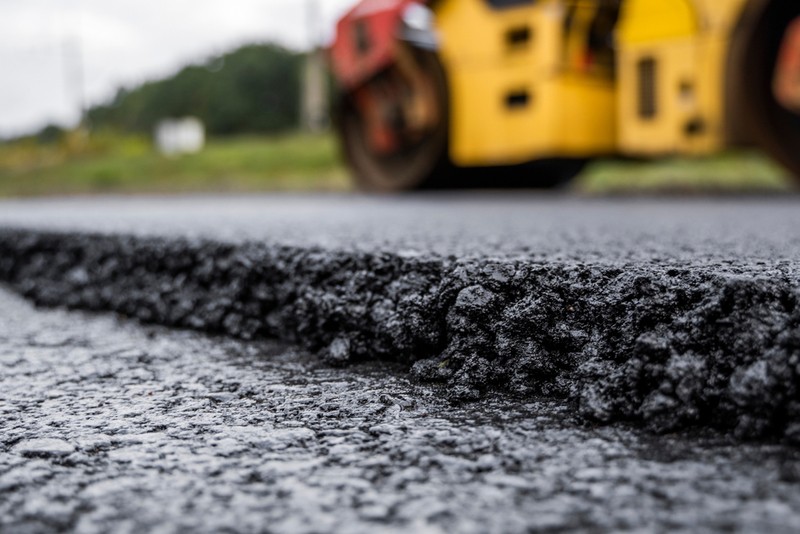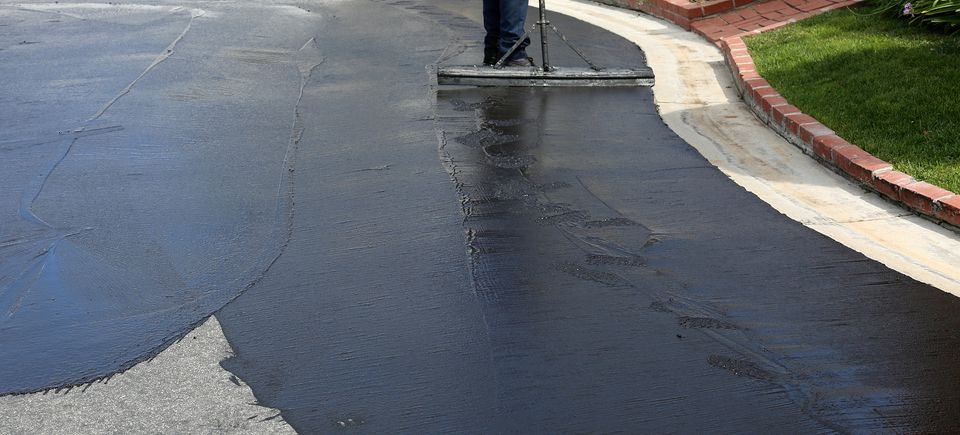Boost Commercial Appeal: Hot Mix Asphalt Sealing for Angled Parking Lots
Boost Commercial Appeal: Hot Mix Asphalt Sealing for Angled Parking Lots
Blog Article
Warm Mix Asphalt: A Sustainable Service for Sidewalk
Hot Mix Asphalt (HMA) has actually emerged as a leading lasting option for sidewalk remedies, providing a myriad of ecological benefits and cutting-edge technologies. As the need for green building and construction techniques grows, discovering the nuances of HMA's sustainability can give beneficial understandings right into the future of sidewalk solutions.
Environmental Advantages of Warm Mix Asphalt

In Addition, Hot Mix Asphalt aids to reduce city warm island effects. Its dark color soaks up sunlight, lowering the quantity of heat mirrored back into the environment contrasted to lighter-colored pavements. This can decrease ambient temperature levels in urban areas, reducing the need for air conditioning and inevitably reducing power intake.
Additionally, Warm Mix Asphalt contributes to improved stormwater management. Its porous nature permits water to reenergize and penetrate the sidewalk groundwater supplies, lowering overflow and the danger of flooding. These environmental benefits make Hot Mix Asphalt a sustainable option for leading freeways and roadways.
Energy Performance in HMA Manufacturing
Is power effectiveness a crucial variable in the production of Warm Mix Asphalt (HMA)? Definitely. Energy plays a considerable role in the production of HMA, influencing both expense and environmental sustainability. One key facet of power performance in HMA production is using warm mix asphalt (WMA) modern technologies (hot mix asphalt). WMA enables the mixing and positioning of asphalt at reduced temperatures compared to conventional hot mix asphalt, causing reduced power intake throughout production. This procedure not only lowers gas use but also decreases greenhouse gas exhausts, making it a much more eco friendly choice.
Moreover, developments in plant modern technologies have led to even more energy-efficient HMA production processes. Modern plants are designed with attributes like recycled asphalt sidewalk (RAP) processing abilities, efficient burner systems, and boosted insulation, all adding to energy financial savings. By optimizing power usage in HMA production, the industry can minimize its carbon footprint while preserving high-quality sidewalk products. Energy performance is, for that reason, a critical consideration in ensuring the sustainability of Hot Mix Asphalt manufacturing.
Recyclability of Hot Mix Asphalt
The recyclability of Warm Mix Asphalt (HMA) is a critical element of its sustainability and lasting environmental effect. HMA is among one of the most recycled materials in the United States, with over 100 million bunches of reclaimed asphalt pavement (RAP) being reused every year in new sidewalk building and construction. Recycling HMA provides several ecological advantages, such as lowering the demand for virgin products, decreasing power consumption during production, and decreasing the amount of waste sent to landfills.
The process of recycling HMA includes milling the existing pavement, squashing it right into smaller items, and mixing it with new accumulation and asphalt binder to create a recycled mix. This recycled mix can frequently execute along with or also better than conventional HMA, while requiring fewer raw materials and producing reduced greenhouse gas exhausts. By including RAP right into new pavement tasks, roadway companies can save natural deposits, minimize prices, and decrease the environmental footprint of road construction and upkeep tasks. Overall, the recyclability of HMA plays a considerable role in advertising lasting methods within the pavement market.

Long-Term Efficiency of HMA
Asphalt sidewalks show durability and durability over a prolonged duration, mirroring the lasting performance of Warm Mix Asphalt (HMA) The longevity of HMA can be attributed to its ability to withstand rush hour loads, severe climate condition, and the impacts of aging. Studies have revealed that properly designed and properly constructed HMA sidewalks can last for two decades or even more with routine maintenance. The secret to making best use of the lasting performance of HMA depends on using high-quality products, adhering to finest practices in construction, and applying reliable upkeep strategies. Correct drain, routine examinations, and prompt repair work are vital for protecting the structural honesty of HMA pavements with time. Furthermore, developments in HMA technology, such as the usage of polymer-modified binders and cozy mix asphalt, have additionally enhanced the longevity and longevity of HMA sidewalks. By prioritizing top quality building and upkeep methods, HMA remains to show itself as a economical and sustainable option for resilient pavement framework.

HMA: Longevity and Sustainability
Showing both durability and sustainability, Warm Mix Asphalt (HMA) has become a cornerstone in the building of resilient sidewalk facilities - hot mix asphalt. HMA's toughness stems from its capacity to endure hefty tons, severe weather, and high website traffic volumes, making it a dependable selection for streets, freeways, and check out here flight terminal runways. The make-up of HMA, which commonly includes aggregates, binder, and filler, plays a crucial duty in enhancing its durability and resistance to tear and put on
Additionally, HMA's sustainability exists in its recyclability and energy-efficient production process. The capability to recycle redeemed asphalt pavement (RAP) in new HMA blends reduces the demand for virgin materials and lessens the environmental effect of sidewalk building and construction and maintenance. Additionally, the energy effectiveness of generating HMA hinges on its reduced blending temperature levels contrasted to other pavement materials, bring about reduced energy usage and greenhouse gas emissions.
Conclusion
In verdict, warm mix asphalt (HMA) offers a sustainable service for pavement with its environmentally pleasant features. HMA's recyclability, power performance in manufacturing, and lasting resilience make it an environment-friendly selection for roadway building. By saving natural deposits, decreasing waste, and lowering greenhouse gas emissions, HMA plays an essential function in promoting sustainability in framework advancement. Its capability to reduce metropolitan warm island impacts site further underscores its importance in developing resistant and eco mindful sidewalk systems.
HMA is one of the most recycled materials in the United States, with over 100 million loads of reclaimed asphalt sidewalk (RAP) being reused annually in brand-new pavement building and construction.The procedure of recycling HMA entails grating the existing pavement, squashing it into smaller sized pieces, and blending it with brand-new aggregate and asphalt binder to produce a recycled mix.Asphalt pavements demonstrate resilience and strength Visit Website over a prolonged duration, reflecting the long-term efficiency of Hot Mix Asphalt (HMA) In addition, developments in HMA technology, such as the use of polymer-modified binders and warm mix asphalt, have actually better boosted the sturdiness and durability of HMA sidewalks. The ability to reuse reclaimed asphalt sidewalk (RAP) in new HMA combinations decreases the demand for virgin materials and reduces the ecological impact of pavement building and construction and maintenance.
Report this page